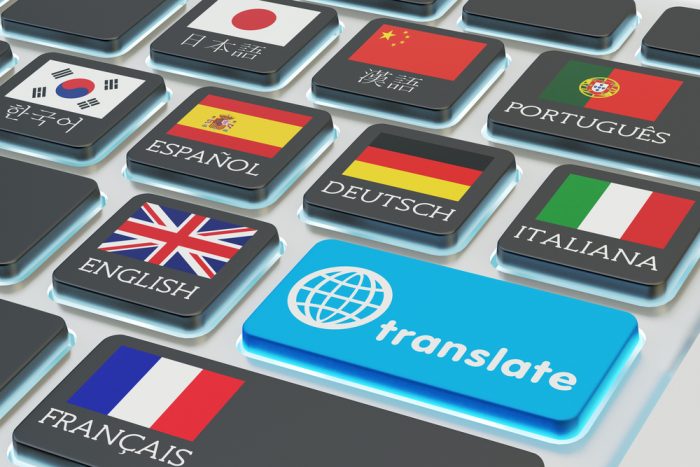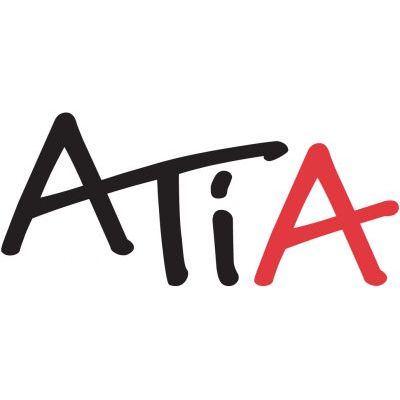By C. K. Eichbauer
Like many of my freelance colleagues, as a certified translator, I have provided certified translations to a wide range of clients over the years. Generally, they fall into two categories: direct clients and indirect clients. My direct clients, i.e. those who approach me directly, include private clients who are most often looking for certified translations of personal documents (birth certificates, etc.). Then there are corporate clients who get in touch because they are looking for a professional translator to translate marketing materials or financial documents, etc. and prefer to deal with the translation professional directly instead of a large language service provider, aka an agency. The advantage of working with direct clients is—you guessed it—that I can communicate with them directly. Although it is more time-consuming, the direct connection to clients allows me to ascertain their needs, ensure good customer service and deal with any issues or questions that may arise. And it makes better business sense.
Nevertheless, I also work for indirect clients, mostly translation agencies. They serve as the intermediary between me and their end-client(s), and frequently approach me for certified translations. In their role as corporate language service providers, they deal with all aspects relating to the end-client. They take a cut for this and I “only” provide them with a certified translation. I have no contact with their end-client and work at a lower rate, because the agency charges a percentage for their part. When all goes well, and I am dealing with an experienced project manager who communicates clearly with the end-client and me, I enjoy agency translations. They allow me to focus on translation instead of customer service and administrative tasks. Over the past 20+ years, I have had the opportunity to work for many different translation agencies across the country, from very large corporations to small regional businesses. I have had some great—and some not so great—experiences. At the end of the day, looking back, the tips I am sharing with you here are based on my own personal experience and on what I have learned. Deciding what works for you and what doesn’t is always a personal decision.
Tip No. 1: Know what you are signing
As I write, a multinational translation agency out of New York has just approached me for a certified translation for one of their corporate end-clients. I explained to the project manager that I cannot fulfill her request to proofread and then provide a “non-notarized linguist cert stamped with an ATIO stamp,” as she puts it. I can only certify the accuracy of my own translation, I tell her. Then she requests that prior to doing the certified translation myself now (“the client said it’s okay”), I “quickly sign” a 7-page independent contractor’s agreement. This agreement contains clauses that would essentially expose me to substantial legal risks, third-party audits of my office, etc. I explain to the project manager that as a member in good standing of several Canadian translators and interpreters’ associations, I would be happy to sign an (additional) confidentiality agreement and a non-competition clause, but that I would have to have my lawyer review such a lengthy agreement, which at first glance does not seem beneficial for me. So—you guessed it—I didn’t sign, and didn’t get the assignment.
Another agency—and this is going back a couple of years—tried to pressure me to provide them with a pre-signed certification template on their letterhead. To reduce “mailing cost of certified translations and for efficiency reasons,” they asked that I basically provide them with a “blank signed cheque.” I explained to them that since I have no control over what my signature will be used for—after all, they are based in another province, I’ve never been to their office, etc.—I cannot provide them with such a signed template. Although they assured me that many of my certified colleagues had no issue with doing so, I didn’t accept the assignment.
Tip No. 2: Know your worth
As a Certified Translator, you have worked hard to earn the right to issue a certified translation—a legal and/or official document—which may be required and used in a variety of settings (e.g. government, court, etc.). Some agencies I’ve worked with over the years value my service and expertise. They know what my rates are and, although they may ask me for some flexibility at times, they don’t approach me with ridiculous requests. Then there are other agencies that have offered me “very large projects,” “very general texts,” but at a cutthroat rate (e.g. 3 cents per word?!); and with the expectation that I deliver a high-quality certified translation. If an agency tells me that they can get the same service for a ridiculously low rate from someone else, I politely let them go.
Tip No. 3: Know the project requirements, delivery, and payment terms
Remember, this is your livelihood and you are entering into a business relationship with an agency. I, for one, always require some sort of assignment confirmation in writing. It may be a purchase or work order, an agreement, or even a very detailed email, clearly specifying the assignment. Before I accept, I need to view the document(s) to be translated. Then I decide how to charge for my work (per word—source or target?—hourly or flat rate). Additional details include: Have you considered or do you charge GST/HST? What will the certified translation (not) include? How will it be delivered (electronically, by mail, courier or Express Post?) How much are they paying you for your services, how (cheque, Interac e-transfer, PayPal?) and by when? I have had some agencies request NET 45 or NET 60 payment terms. In some instances, that is acceptable to me, but in others it’s not. At the end of the day, as a freelancer, I have earned the right and privilege to decide and negotiate what works for me and what doesn’t.
Tip No. 4: Know the format and purpose of a certified translation
As I was reminded recently, when neither the end-client nor the agency is clear on what is required, they cannot properly communicate it to us, the certified translators. In this case, the end-client needed an “affidavit” in addition to a translator’s statement/declaration and the certified translation, after the fact. The agency, however, only advised me after I had provided the certified translation to them, that now their end-client wanted an affidavit to authenticate the document. I told the agency that such an affidavit certifying the authenticity of the original document couldn’t be provided by me, because a) I didn’t see the original, b) the original wasn’t complete and c) this was the responsibility of a notary, not a certified translator. The end-client then went so far as to contact my translator’s association to suggest that I was refusing service, which in turn contacted me. It turned out that this was primarily a case of miscommunication in clarifying the requirements. Once everyone was communicating properly, the issue could be resolved by re-issuing the certified translation and including an affidavit authenticating my signature. This was an instance in which not being able to communicate directly with the end-client proved to be quite a challenge.
Throughout the years, I have often found myself explaining to end-clients and to project managers what I can and cannot provide. I explain to them that I will include a certified translator’s declaration or statement with my translation; that I attach the source document to the certified translation, and that I stamp or seal and sign the declaration and the translation. At times, and mainly for court purposes, I have been asked to provide an affidavit in addition to all of the above. Then I ask my agency clients to let me know in advance, so I can estimate notary cost and my administrative charge for this service. If everyone knows what the requirements are and what purpose the certified translation is to serve (court, government agency, employer, etc.) then chances are we are all on the same page.
Tip No. 5: Know the scope of your responsibilities
Just the other day, an agency client approached me with the following request: They emailed me a number of financial documents, account statements, etc. together with a form. Instead of providing them with a certified translation of the actual documents, they asked me just to enter my translation of “key information” in a column in their form. The key information required included account services, account history, etc. Their request was for me to review the foreign language documents, select the information, translate only that information and then enter it into a form provided by them for their end-client, presumably a bank. All of this at a low rate, of course. I politely declined, explaining that it was outside my scope of responsibilities to decide which information they/their end client considered to be “key information”. This type of request sometimes comes in the form of “please translate only the most important information in this document,” which I also decline, for the same reason. I then invite the client to mark the sections they would like to have translated and include an appropriate translator’s note in the certified translation.
Tip No. 6: Know red flags
Many red flags in our industry are payment-related. My agency clients value the fact that they can rely on me to deliver good quality translations on time. Most of them pay in a timely manner. Nevertheless, I have also come across agencies that are not quite so reliable when it comes to payment. To check whether payment could be an issue with a new agency client, the following steps might help:
- Ask the project manager about their payment terms and methods before you accept the assignment. NET 30, NET 60, or more, by cheque, by Interac e-transfer, by direct deposit? If the response is evasive, non-specific or lacking … red flag!
- This cannot be stressed enough: Insist on a written purchase order/contract which includes payment terms and method. If the agency refuses to specify anything in writing … red flag!
- If the amount exceeds a certain threshold (e.g. several thousand dollars), insist on a 50% down-payment upfront. If the agency has an issue with a down-payment on a large volume project … red flag!
- If you have not received your payment on time and when you remind them (always do!) they use excuses like “our accountant is on vacation…”, “we can’t find your invoice…”, etc. … red flag!
Tip No. 7: Know how to spot potential fraud
The Internet has provided us with the opportunity to provide translation services nationally and internationally. Unfortunately, it has also made it easier for fraudsters to attempt to scam language professionals. Based on my experience, more often than not, if a request sounds toogood to be true, it is. And, if your gut feeling tells you to be careful, it’s usually a good idea to listen. Depending on your comfort level, you may be fine with providing certified translations to agency clients from other continents or you may not. If you do, though, it’s important toremember that if there are any problems, the physical distance alone would be a hindranceto resolving them. Also, business practices in other countries may differ from the Canadianlegal and business environment, which may impact purchase orders, non-disclosureagreements and contracts. One example here involves upfront payment by cheque(including bank certified cheques), which, based on my experience, you may wish to avoid. The translator provides a quote for a large-volume project, requesting an upfront deposit or fullpayment. The fraudster sends, for instance, a bank-certified cheque to the translator thatsignificantly exceeds the amount due. The fraudster then requests that you pay back theoverpayment by an electronic bank transfer or by a money transfer service, e.g. WesternUnion. Once they have received your payment, the certified cheque is returned by the bank as fraudulent, leaving you out of pocket. Always research your prospective agency clientsthoroughly by visiting their website, perhaps checking with the Better Business Bureau andcalling them directly to ensure that you are dealing with a reputable business. (Ed. We havepointed out this scam in past Voice editions so this should not be new to any of our regularreaders!)
Tip No. 8: Know your responsibilities
Usually, when freelance translators provide translation services for an agency, it’s the agency’s job to look after editing and proofreading the translation (usually by a second qualified translator), before delivering the final translation to the end-client. The agency takes a cut for this service and therefore the freelance translator normally earns less than if they were working directly for an end-client. For certified translations, however, the process may be different and thus requires clarification with the client, ideally upfront. Are they reviewing the translation before it is printed and certified? Is the certified translator (you) responsible for your own editing & proofreading (either yourself or by sub-contracting another colleague)? If I do my own editing & proofreading, I charge the agency more to cover this expense. I have also been asked to proofread and edit translations completed by non-certified translators and certify it. Since I am certifying the accuracy and completeness of my own translation, these types of requests are unacceptable to me. (Ed. According to STIBC’s ethics, certified translators may only certify their own translations!)
Tip No. 9: Know the importance of confidentiality
Although this is an important component of any association membership for Certified Translators, many agencies require that an additional non-disclosure agreement be signed. If you are working with another certified translator, e.g. for editing and proofreading, ensure that the agency is made aware up front and that the colleague is also included. On the flip side, I suggest reading the NDA very carefully to ensure that the agency is not attempting to restrict your business practices, since they are not your only client. I have been asked to sign so-called non-disclosure agreements that were restrictive in terms of working for other clients or included personal liability clauses, although it is usually the agency that should have final responsibility for a translation if it manages the relationship with the end-client.
Tip No. 10: Know the range of technology and services
Technology has come a long way over the last two decades. On the one hand, it has significantly helped language professionals improve the efficiency and quality of their own work. On the other hand, it has also allowed some international agencies to exploit certain freelance translators by misusing the advantages that technology has to offer. Translation memory, for example, originally developed by translators to improve their own efficiency and consistency, is now helping some agencies reduce the per-word rate paid to the freelance translator by using repetitions. Some agencies pass these savings on to their end-clients, but others do not. Some agencies use online platforms to manage, upload and transfer source documents and translations and are now attempting to find ways to digitize certified translations, thus possibly encroaching on our responsibilities as certified translators. While computerizing and automating certain tasks, and using technology to deliver better quality translations more efficiently makes sense, let’s not overlook the human element. With any technology solution I ask myself: Whom does it help in the end? Do I, as a Certified Translator, benefit from the cost-savings and efficiencies? I am running a business after all, and this is my livelihood. Keeping in mind that translation is both a skill and an art involving, among other human abilities, consciousness, technology should serve us, but we should continue to be aware of its limitations.
One of the more interesting aspects of working as a Certified Translator is my own process of continuous learning and then being able to pass on knowledge. In closing, let me leave you with this quote:
In vain have you acquired knowledge if you have not imparted it to others.
Deuteronomy Rabbah
Author: Claudia K. Eichbauer
Certified Translator & Certified Conference Interpreter, German<>English
Editor: Aurelia Sedlmair
Certified Translator, German<>English
Article originally published in The STIBC Voice, April 2020.




